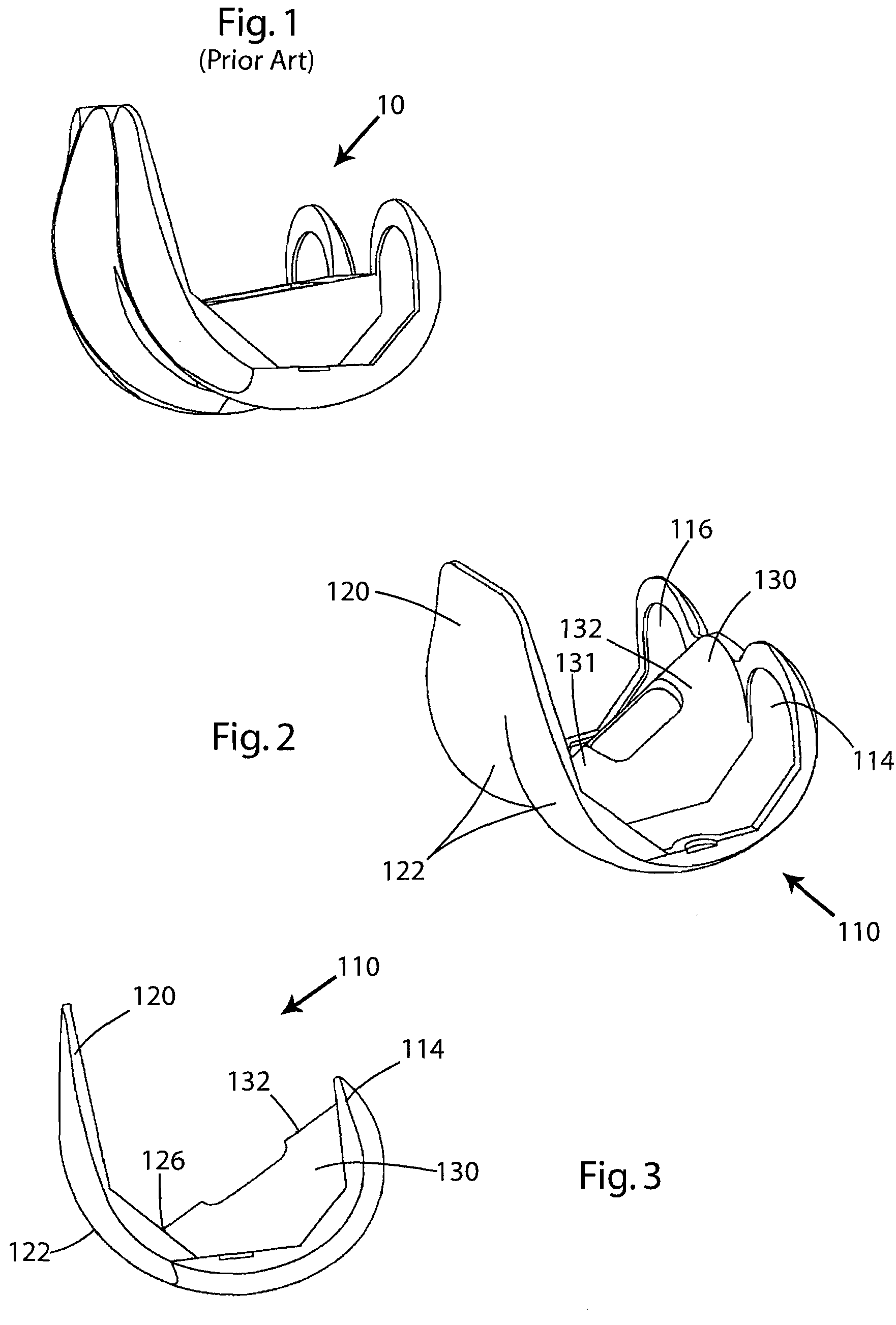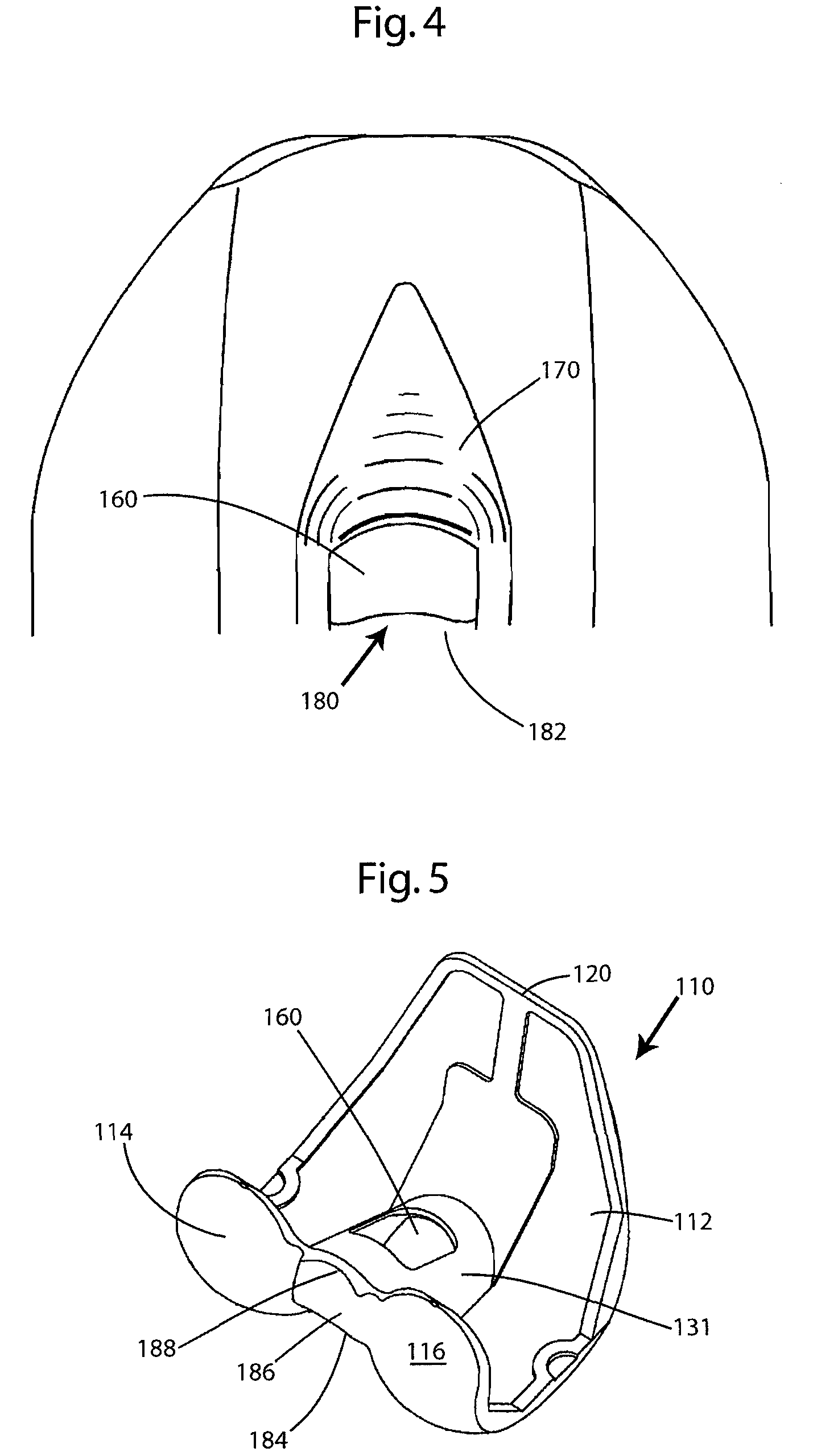Posterior stabilized knee prosthesis
- Summary
- Abstract
- Description
- Claims
- Application Information
AI Technical Summary
Benefits of technology
Problems solved by technology
Method used
Image
Examples
example
Computer models of the conventional implant of FIG. 1 (i.e., the Exactech Optetrak® PS total knee prosthesis) were modified to facilitate finite element meshing of the tibial post and the femoral anterior cam. The components were positioned in 10° of hyperextension. In this example, the anterior cam of the femoral component was modeled as a rigid indenter. The post of the tibial component was modeled as UHMWPE using a true stress-strain relationship. The constitutive model for this material was based on a von Mises yield surface with isotropic hardening. FE meshes were created, with the tibial post FE mesh being constructed using 8-noded hexagonal brick elements and the anterior cam surface being composed of 4-noded rectangular rigid elements. Because the post-cam mechanism is symmetric about the sagittal plane, a symmetric boundary condition was used and only half the mechanism modeled. The distal face of the post was fixed in all directions and the cam was allowed translation only...
PUM
 Login to View More
Login to View More Abstract
Description
Claims
Application Information
 Login to View More
Login to View More - R&D
- Intellectual Property
- Life Sciences
- Materials
- Tech Scout
- Unparalleled Data Quality
- Higher Quality Content
- 60% Fewer Hallucinations
Browse by: Latest US Patents, China's latest patents, Technical Efficacy Thesaurus, Application Domain, Technology Topic, Popular Technical Reports.
© 2025 PatSnap. All rights reserved.Legal|Privacy policy|Modern Slavery Act Transparency Statement|Sitemap|About US| Contact US: help@patsnap.com



